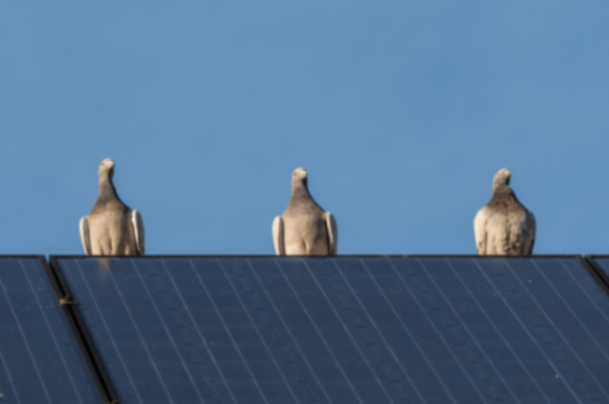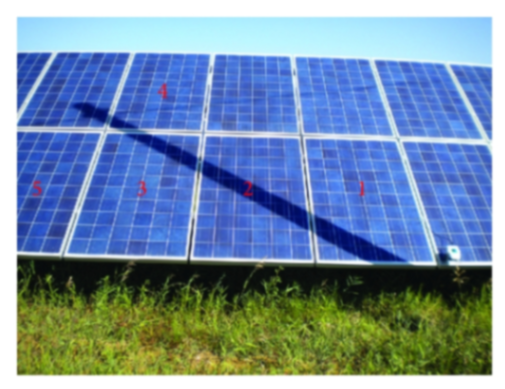Most Common Issues Faced by Solar Panel Owners- Part 1

Living in a solar-powered home relieves you of worries related to sudden power cuts and skyrocketing electricity bills. However, solar panels have to be cared for and looked after to ensure that they function at their best. As the adage goes, prevention is better than cure. That said, prevention can only be done when you know the potential threats to your household solar power system. In this blog, we will list the 3 most commonly faced threats by solar users all over the globe and in India specifically.
1. Bird Droppings
Listening to the chirping of birds while having your morning coffee sounds fascinating. But, birds can become big troublemakers when it comes to rooftop solar panel installations.
Bird droppings accumulate over the surface of panels and over time lead to a significant reduction in the amount of electricity generated by the panels. This happens because droppings tend to spread, stick, and cover the area over which incident sunlight falls. Pigeons are the most notorious when it comes to solar installations in urban spaces.
Besides dropping sh*t bombs, birds often tend to nestle beneath panels thereby obstructing with its proper functioning. They can cause damage to solar wiring and solar panel structure too.
Solution: You can consider putting up mesh, barbed wires, and bird spikes to prevent these tiny tweeters from damaging your solar setup.
2. Dust and Pollutant Accumulation:

Particulate pollution comes free with urban life. PM 10, 2.5, dust, smoke, and soot not only damage our lungs but also accumulate over the shiny lamination of solar panels. While the physical change might not be visible, the pollutant layer surely causes an evident decline in the efficiency of solar panels. The decline can range from 6.5% to 40% depending on the area where the panels are installed. In extreme cases, dust accumulation over time can even lead to hotspot creation on the panels as the area covered under dust can heat up as compared to surrounding cells in the solar panel.
Solution: While the accumulation of dust can not be completely avoided, but its effect on the performance of solar panels can be minimized by regular cleaning of the surface. You can check our blog on the cleaning of solar panels to know more. In case your solar panels are installed in a high pollution area or are prone to dust, then you can even consider putting automated solar panel cleaners in place.
3. Hotspot Creation and Shading of Panel

A solar panel hotspot is created when any part of the solar panel is overheated because of overloading. This can happen primarily because of three reasons - improper soldering, a structural defect in solar cells, or due to shading of a part of the solar panel. Badly soldered wires lead to lower resistance in that part of the panel leading to an increased current transmission which causes that part to get warm thus creating a hotspot.
Hotspots can also be created by partial shading of the solar panel too. Since in a solar panel, all the solar cells are connected in series, even if only a few cells are shaded it leads to a drastic reduction in power output - sometimes as high as 50% and even zero output in some cases. Over time hotspots can lead to burning out of cells due to short-circuiting thereby causing irreparable or serious damage to the panels.
Solution: An obvious solution is to install the solar panels at a place where no shadow falls during the day. Users should actively inspect to check if a tree branch or a pole is casting any shadow on the panels. Another solution is the use of solar panel bypass diodes. These diodes ensure that the loss is only from the shaded group of cells and not the entire panel’s output is affected.
4. Snail Trails on Solar Panels:
Snail trails refer to the discoloration of the solar panel surface a couple of years after their installation. It manifests as white or silvery lines on the panel which looks as if a snail crawled over it.
Causes: Mostly, snail trail contamination occurs as a result of using poor quality metallization silver paste by the solar panel manufacturer. It leads to building up of moisture which then results in discoloration and a drop in power output. Microcracks too can appear like snail trails.
Solution: Prevention is better than finding a remedy and thus installing high-quality solar equipment is the best way to prevent this from happening. Team Unergia helps in finding the best and most trusted installers at affordable prices. Feel free to drop a text and we will get in touch.
Sadly, the list of problems does not end here. We will cover some more solar panel problems in the next post.
 Unergia
Unergia